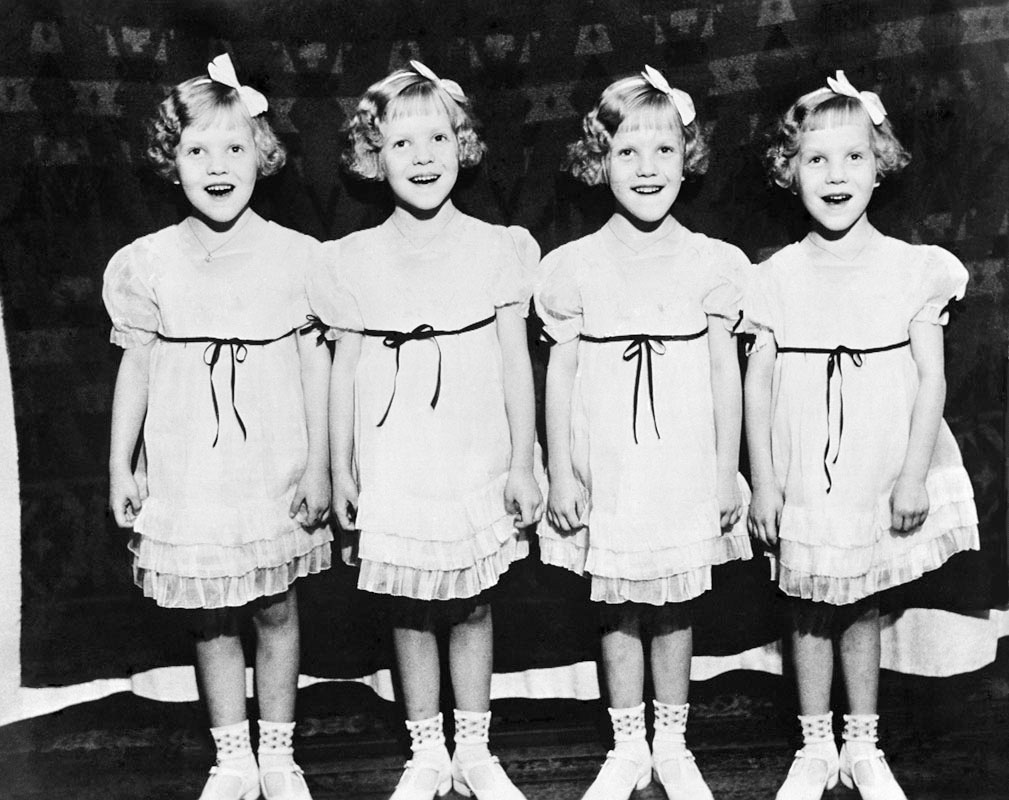Schizophrenia and Other Psychotic Disorders
364

365
CHAPTER OUTLINE
What Are Schizophrenia and Other Psychotic Disorders?
The Symptoms of Schizophrenia
Cognitive Deficits: The Specifics
Distinguishing Between Schizophrenia and
Other Disorders
Schizophrenia Facts in Detail
Understanding Schizophrenia
Neurological Factors in Schizophrenia
Psychological Factors in Schizophrenia
Social Factors in Schizophrenia
Feedback Loops in Understanding Schizophrenia
Treating Schizophrenia
Targeting Neurological Factors in Treating Schizophrenia
Targeting Psychological Factors in Treating Schizophrenia
Targeting Social Factors in Treating Schizophrenia
Feedback Loops in Treating Schizophrenia
In 1930, female quadruplets were born in a small midwestern city. All four survived, which at that time was remarkable. This set of quadruplets (or quads) was also remarkable in two other ways: All four developed from a single fertilized egg and so basically were genetically identical. In addition, all four went on to develop symptoms of schizophrenia as young adults. In the psychological literature, the quadruplets came to be known by pseudonyms they were given to protect their privacy: Nora, Iris, Myra, and Hester Genain.
The quads were born to parents of limited financial means. Their father, Henry, was abusive, violent, and alcoholic. He also exhibited some symptoms of schizophrenia. Their mother, Maud, had been a nurse. Maud was very strict with the girls, but she was a better parent than Henry.
By the time the quads were in their early 20s, three had been hospitalized for schizophrenia at least once, and the fourth had symptoms of schizophrenia. Also around that time, Mrs. Genain was recovering from bladder surgery, and it was becoming increasingly difficult for her to care for the young women. The family’s problems were brought to the attention of researchers at the National Institute of Mental Health (NIMH), and the family was invited to move to a research and treatment facility in Washington, DC. At the facility, the sisters were treated, studied, and written about extensively. In fact, the pseudonyms the quads were given related to the initials of NIMH: Nora, Iris, Myra, and Hester. Their false last name, Genain, means “dire birth” in Greek.
The fact that all four of the Genain sisters developed symptoms of schizophrenia was by no means an inevitable result. For identical twins, the chance of both twins developing schizophrenia is about 48%. For identical quads, the odds of all four developing schizophrenia are about one in six, or 16% (Rosenthal, 1963). The quads’ story offers possible clues about why all four of them developed schizophrenia and can help us understand what causes the disorder. In this chapter, we discuss the symptoms of schizophrenia, what is known about its causes, and current treatments for this disorder.

366